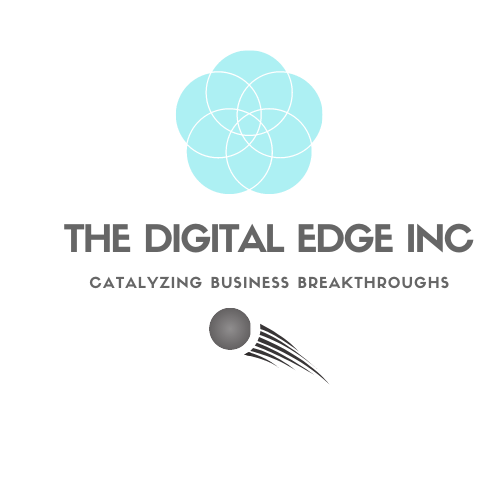Digital Detox for Mission-Driven Leaders: Balancing Technology and Inner Peace in 2025

Technology empowers you to amplify your mission, but it often overwhelms you with endless notifications and demands. The hyper-connected world of 2025 intensifies this challenge. Consider these trends: the number of connected devices will soar to 75.44 billion, and global data creation will reach 180 zettabytes. This constant connectivity demands balance to protect your focus and well-being.
Inner peace is not just a personal luxury; it’s a leadership necessity. When you cultivate calm, you inspire trust and resilience in your team. As history shows, the most impactful leaders led with clarity and certainty, not chaos.
Digital detox for mission-driven leaders offers a path to reclaim your peace and purpose.
Key Takeaways
Taking breaks from technology helps leaders stay focused and clear.
Limiting tech use improves health and balances work and personal life.
Having tech-free moments boosts creativity and builds stronger relationships.
Activities like meditation help with digital breaks and mental wellness.
Using tech wisely makes detox easier and helps you lead better.
Understanding Digital Detox for Mission-Driven Leaders
What Is Digital Detox?
Digital detox is the intentional process of reducing your reliance on technology to restore balance and clarity in your life. It’s not about abandoning technology altogether. Instead, it’s about using it mindfully to serve your mission without letting it control you. For mission-driven leaders like you, this means identifying non-essential digital activities and limiting their duration. You can replace these with analog alternatives, such as reading physical books or journaling. By stepping away from constant connectivity, you create space to reflect, recharge, and reconnect with your purpose.
Why Digital Detox Matters in 2025
In the hyper-connected world of 2025, the pressure to stay online is greater than ever. With billions of devices and endless streams of data, you face a constant battle for your attention. This digital overload can drain your energy and cloud your decision-making. A digital detox helps you reclaim your focus and align your actions with your values. It allows you to manage the demands of technology while nurturing your mental and emotional well-being. By stepping back, you gain the clarity needed to lead with confidence and inspire others.
The Unique Challenges for Mission-Driven Leaders
As a mission-driven leader, your challenges with digital detox are unique. Your passion for making an impact often keeps you tethered to technology. You may feel pressure to respond to every email or stay updated on every trend. This can lead to burnout and diminish your effectiveness. Setting clear boundaries with colleagues about your availability can help. Incorporating reflection periods into your routine allows you to assess how reduced digital consumption improves your productivity and well-being. Mindfulness practices, such as meditation, can also help you manage anxiety and stay grounded. Balancing technology and spirituality is key to maintaining your inner peace while driving your mission forward.
Benefits of Digital Detox for Mission-Driven Leaders

Enhanced Focus and Productivity
A digital detox helps you reclaim your ability to focus in a world filled with distractions. By stepping away from constant notifications and digital noise, you create mental clarity. This clarity allows you to make better decisions and communicate more effectively with your team. Leaders who embrace digital detox often report feeling more present and engaged in their work. This presence strengthens connections with colleagues and fosters a collaborative environment.
Improved mental clarity sharpens your decision-making.
Deeper connections with your team enhance communication.
A better work-life balance boosts your productivity.
Periods of solitude during a detox also encourage strategic thinking. You’ll find yourself better equipped to align your actions with your mission. By reducing digital distractions, you can focus on what truly matters and lead with purpose.
Boosted Creativity and Innovation
When you take breaks from technology, your mind gets the chance to rest and recharge. This downtime enhances your memory and cognitive function, especially in problem-solving situations. Many leaders feel the pressure to stay connected constantly, but this can stifle creativity. Allowing yourself to disconnect opens the door to fresh ideas and innovative solutions.
"Staying 'always on' can actually hold back your creativity, cloud decision-making, and take a toll on mental well-being."
Digital detoxing increases your mental agility. You’ll find yourself responding to challenges with greater speed and flexibility. By giving your brain the space it needs to wander, you unlock new perspectives that drive innovation. Creativity thrives when you allow yourself moments of stillness.
Improved Mental and Emotional Well-Being
Constant connectivity can take a toll on your mental health. Excessive screen time often leads to anxiety, sleep disturbances, and even depression. A digital detox reduces these stressors, helping you feel more balanced and positive. Research shows that limiting device usage can significantly improve your emotional well-being.
By stepping back from social media and other digital platforms, you reduce feelings of loneliness and worry. This creates space for meaningful real-life connections and quality time with loved ones. Improved sleep and reduced anxiety contribute to a healthier mindset. As a leader, your mental health directly impacts your ability to inspire and guide others. Prioritizing your well-being ensures you can lead with confidence and compassion.
How to Implement a Digital Detox for Mission-Driven Leaders

Set Clear Boundaries with Technology
You can take control of your relationship with technology by setting clear boundaries. This step ensures that technology enriches your life without overwhelming it. Start by identifying areas where technology use interferes with your well-being. For example, limiting screen time during meals can improve family communication and promote better sleep.
Here are some practical ways to establish boundaries:
Create phone-free zones, such as the dining room or bedroom, to foster real-world connections.
Set specific times for device usage, like checking emails only during work hours.
Periodically review and adjust these boundaries to suit your evolving needs.
Position yourself as a guide rather than an enforcer when implementing these changes. This approach encourages a healthier relationship with technology for you and those around you. By taking these steps, you regain control over your time and energy.
Schedule Regular Tech-Free Times
Incorporating digital-free times into your routine is essential for maintaining balance. These moments allow you to recharge and focus on offline activities. Start small by designating specific hours each day for a digital detox. For instance, you could plan a tech-free evening once a week to spend quality time with loved ones or engage in hobbies.
Consider planning entire days without digital devices to immerse yourself in nature or other fulfilling activities. Balance these periods with physical activities like yoga or walking to enhance your overall health. Scheduling these breaks helps you disconnect from the digital world and reconnect with what truly matters.
Embrace Mindfulness Practices
Mindfulness practices can transform your digital detox experience. These techniques help you manage stress and stay grounded in the present moment. Meditation and deep-breathing exercises are excellent starting points. You can also substitute digital activities with analog alternatives, such as reading physical books or journaling.
Incorporate mindfulness into your daily routine by setting aside time for reflection. Assess how reduced digital consumption impacts your productivity and emotional well-being. Gradually reduce screen time to ease into a digital detox. These practices not only improve your mental health but also enhance your ability to lead with clarity and purpose.
Use Technology to Support Your Detox
Technology doesn’t have to be the enemy of your digital detox. When used wisely, it can actually support your journey toward balance and inner peace. By leveraging the right tools, you can create a healthier relationship with your devices.
1. Use Apps to Monitor Screen Time
Start by understanding your current habits. Apps like RescueTime, Moment, or your phone’s built-in screen time tracker can help. These tools provide insights into how much time you spend on different activities. Use this data to identify areas where you can cut back. Set daily limits for apps that consume too much of your attention.
Tip: Treat these apps as accountability partners. They remind you to stay on track with your detox goals.
2. Schedule Breaks with Digital Wellness Tools
Use technology to schedule intentional breaks. Apps like Forest or Focus@Will encourage you to step away from your screen. Forest, for example, lets you grow a virtual tree while you stay offline. If you return to your device too soon, the tree withers. This gamified approach makes taking breaks more engaging and rewarding.
3. Automate Tasks to Reduce Digital Overload
Automation tools like Zapier or IFTTT can simplify your workload. Set up automated workflows for repetitive tasks, such as sorting emails or posting updates. By reducing manual effort, you free up time for offline activities.
4. Leverage Blue Light Filters for Better Sleep
Excessive screen time, especially at night, disrupts your sleep. Use apps like f.lux or your device’s night mode to reduce blue light exposure. This small adjustment can improve your sleep quality and overall well-being.
Note: Better sleep enhances your ability to lead with clarity and energy.
5. Explore Guided Meditation Apps
Mindfulness apps like Headspace or Calm can complement your detox. These apps offer guided meditations, breathing exercises, and sleep stories. Use them during your tech-free times to deepen your relaxation and focus.
By using technology intentionally, you can transform it from a source of stress into a tool for growth. These strategies empower you to stay in control while pursuing your mission with renewed energy and purpose.
Overcoming Challenges in Digital Detox
Addressing Fear of Missing Out (FOMO)
FOMO can make stepping away from technology feel daunting. You might worry about missing updates, opportunities, or social interactions. However, you can overcome this fear by shifting your focus to what truly matters.
Engage in a digital detox with friends or colleagues. Shared experiences reduce the anxiety of being left out when others use their devices.
Spend time reflecting on your personal happiness and health. Solitude helps you realize that your worth isn’t tied to constant connectivity.
Practice mindfulness techniques like meditation or yoga. These activities ground you in the present moment and foster calmness.
Strengthen relationships by spending quality time with loved ones. This creates meaningful connections that combat feelings of inadequacy.
Use journaling to identify FOMO triggers. Reframe your thoughts to focus on gratitude and the benefits of disconnecting.
By setting limits on connectivity, you establish a healthier work-life balance. This reduces the impact of curated online content, which often fuels FOMO. Remember, stepping back allows you to reconnect with yourself and your purpose.
Managing Work-Related Pressures
Work demands can make digital detox feel impossible. Many leaders feel pressured to stay available around the clock. This constant connectivity increases stress and disrupts your well-being.
61% of employees report stress from answering calls and emails outside of work.
64% feel stressed when checking work messages before bed, while 70% do so first thing in the morning.
To manage these pressures, set clear boundaries with your team. Communicate your availability and stick to it. For example, avoid checking emails after work hours or during weekends. Automate repetitive tasks using tools like Zapier to reduce your workload. Prioritize tasks that align with your mission and delegate the rest.
By taking these steps, you create a healthier relationship with work. This not only reduces stress but also enhances your ability to lead effectively.
Staying Consistent with Your Detox Goals
Consistency is key to a successful digital detox. Start by gradually reducing screen time. Identify non-essential digital activities and replace them with analog alternatives. For instance, read a physical book instead of scrolling through online content.
Set boundaries with colleagues to protect your tech-free periods.
Schedule reflection times to assess how reduced digital use impacts your productivity and well-being.
Incorporate mindfulness practices like meditation to stay focused and manage anxiety.
Treat your detox as a journey, not a one-time event. Small, consistent changes lead to lasting results. By staying committed, you’ll find it easier to balance technology with inner peace.
Tip: Celebrate your progress, no matter how small. Each step brings you closer to a healthier, more intentional life.
Balancing technology and inner peace is essential for your personal leadership and long-term success. A clear mind allows you to lead with purpose and clarity, inspiring those around you. Digital detox offers numerous benefits, including better sleep, reduced stress, and stronger connections with others. It also enhances creativity, productivity, and decision-making, helping you align your actions with your mission.
Start finding balance today by taking control of your digital habits. Set one small boundary, like creating tech-free zones or delaying email checks in the morning. These simple steps can transform your relationship with technology and guide you toward a more intentional, fulfilling life.
FAQ
How long should a digital detox last?
The duration depends on your goals. Start with short breaks, like an hour daily or one tech-free evening weekly. Gradually extend these periods as you feel comfortable. Consistency matters more than length. Regular detoxes help you build a sustainable balance between technology and inner peace.
Can I still use technology during a digital detox?
Yes, but use it intentionally. Focus on essential tasks that align with your mission. Avoid mindless scrolling or unnecessary notifications. Leverage tools like screen time trackers or meditation apps to support your detox journey. The goal is mindful usage, not complete avoidance.
What if my work requires constant connectivity?
Set clear boundaries with your team. Communicate your availability and stick to it. Use automation tools to handle repetitive tasks. Schedule tech-free times outside work hours to recharge. Even small breaks can improve your focus and well-being without compromising your responsibilities.
How do I stay motivated to continue a digital detox?
Celebrate small wins. Reflect on the benefits, like improved focus or better sleep. Share your progress with friends or colleagues for accountability. Use mindfulness practices to stay grounded. Remember, every step toward balance strengthens your ability to lead with clarity and purpose.
Is digital detox suitable for everyone?
Absolutely! Anyone can benefit from reduced screen time. Tailor your detox to fit your lifestyle and goals. Whether you're a leader, student, or parent, intentional technology use enhances focus, creativity, and emotional well-being. Start small and adjust as needed to create lasting change.
See Also
A Compassionate Organization's Path to Digital Success by 2025
Adapting to the Fast Evolution of Digital Technology
Effective Strategies for Securing Leadership Support in Marketing
Increase Revenue Using Innovative Marketing Techniques from Digital Edge

